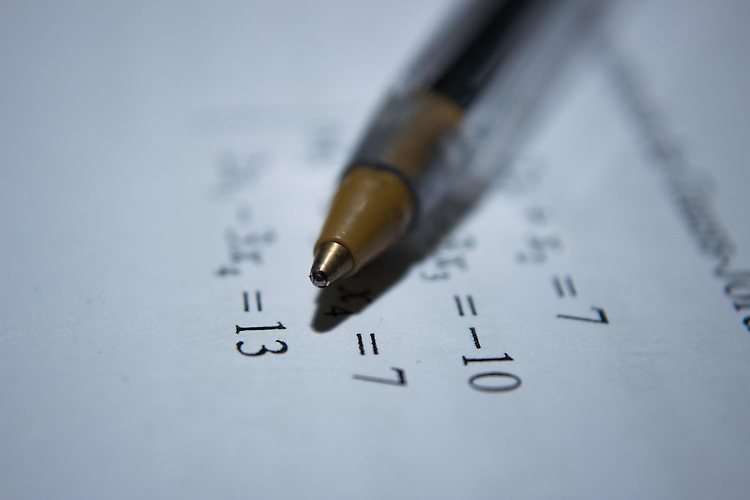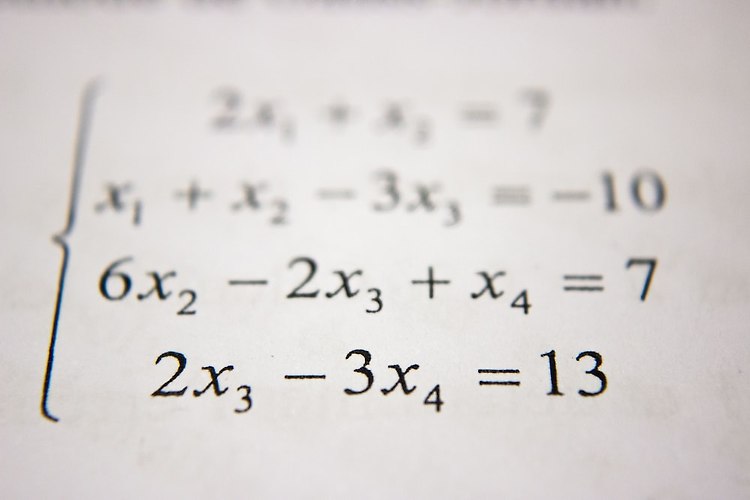

Introduction
The world of mathematics is vast and diverse, and one of its many fascinating branches is linear algebra. Linear algebra is the study of vector spaces and linear transformations, and it has a wide range of applications in areas such as computer graphics, machine learning, and quantum mechanics. In this article, we will delve into the concepts of determinants and inverses, two fundamental and interrelated topics in linear algebra. Understanding these concepts is crucial for unlocking the mysteries of matrices and solving complex mathematical problems.
Definitions
A matrix is a rectangular array of numbers, symbols, or expressions, arranged in rows and columns. For example, a matrix $A$ with $m$ rows and $n$ columns can be represented as follows:
$A = \begin{bmatrix} a_{11} & a_{12} & \dots & a_{1n} \\ a_{21} & a_{22} & \dots & a_{2n} \\ \vdots & \vdots & \ddots & \vdots \\ a_{m1} & a_{m2} & \dots & a_{mn} \end{bmatrix}$
The size or dimension of the matrix $A$ is represented as $m \times n$. A scalar is a single number, and a vector is an array of numbers. A matrix with only one row or one column is called a row matrix or a column matrix, respectively.
The determinant of a square matrix $A$ with size $n \times n$ is a scalar value that represents the magnitude and orientation of the matrix. It is denoted by $\det(A)$ or simply $|A|$. The determinant of a $2 \times 2$ matrix can be calculated using the following formula:
$\det \begin{bmatrix} a & b \\ c & d \end{bmatrix} = ad - bc$
For larger matrices, the determinant can be calculated using the Laplace expansion, which involves expanding the determinant along a row or column and using the formula for a $2 \times 2$ matrix.
The inverse of a square matrix $A$ with size $n \times n$ is a matrix $A^{-1}$ such that $AA^{-1} = A^{-1}A = I$, where $I$ is the identity matrix, which is a square matrix with ones along the main diagonal and zeros elsewhere. The inverse of a matrix only exists if the determinant of the matrix is non-zero. If the inverse exists, it is unique.
Theorems
One of the key theorems in linear algebra is the Inverse Matrix Theorem, which states that if $A$ and $B$ are square matrices of the same size, and $AB = BA = I$, then $A$ and $B$ are inverses of each other. In other words, if $A$ has an inverse, then it is unique, and the inverse is $B$.
Another important theorem is the Determinant of a Product Theorem, which states that for square matrices $A$ and $B$ of the same size, the determinant of their product $AB$ is equal to the product of their determinants, i.e. $\det(AB) = \det(A)\det(B)$.
Properties
The determinant of a matrix has several important properties, including:
- Linearity: $\det(A + B) = \det(A) + \det(B)$ and $\det(cA) = c^n \det(A)$ for scalar $c$.
- Multiplicativity: $\det(AB) = \det(A)\det(B)$.
- Unitarily invariant: $\det(UAV) = \det(A)$ for unitary matrices $U$ and $V$.
- Invariance under transposition: $\det(A^T) = \det(A)$.
- Change of basis formula: $\det(P^{-1}AP) = \det(A)$ for invertible matrix $P$.
Example and Solution
Consider the matrix $A = \begin{bmatrix} 2 & 3 \\ 1 & 4 \end{bmatrix}$. To find the determinant of $A$, we use the formula for a $2 \times 2$ matrix:
$\det \begin{bmatrix} 2 & 3 \\ 1 & 4 \end{bmatrix} = 2 \cdot 4 - 3 \cdot 1 = 8 - 3 = 5$
Therefore, $\det(A) = 5$, and since the determinant is non-zero, $A$ has an inverse. To find the inverse of $A$, we use the formula $A^{-1} = \frac{1}{\det(A)} \cdot \text{adj}(A)$, where $\text{adj}(A)$ is the adjugate or classical adjoint of the matrix, which is the transpose of the matrix of cofactors.
The matrix of cofactors of $A$ is given by:
$C = \begin{bmatrix} 4 & -3 \\ -1 & 2 \end{bmatrix}$
Therefore, the adjugate of $A$ is $C^T = \begin{bmatrix} 4 & -1 \\ -3 & 2 \end{bmatrix}$.
Finally, the inverse of $A$ is:
$A^{-1} = \frac{1}{\det(A)} \cdot \text{adj}(A) = \frac{1}{5} \cdot \begin{bmatrix} 4 & -1 \\ -3 & 2 \end{bmatrix} = \begin{bmatrix} \frac{4}{5} & -\frac{1}{5} \\ -\frac{3}{5} & \frac{2}{5} \end{bmatrix}$
Applications
Determinants and inverses have numerous applications in various fields such as physics, engineering, and finance. In physics, the determinant of a matrix can be used to calculate the volume change in linear transformations such as rotations and dilations. In engineering, the inverse of a matrix can be used to solve systems of linear equations and to find the unknown variables. In finance, the inverse of a matrix is used to calculate the optimal portfolios in modern portfolio theory and to solve optimization problems.
Conclusion
Determinants and inverses are two important concepts in linear algebra that play a crucial role in solving mathematical problems. Understanding these concepts and their properties, theorems, and applications is essential for unlocking the mysteries of matrices and advancing in fields such as computer graphics

You know what's cooler than magic? Math.
포스팅이 좋았다면 "좋아요❤️" 또는 "구독👍🏻" 해주세요!



